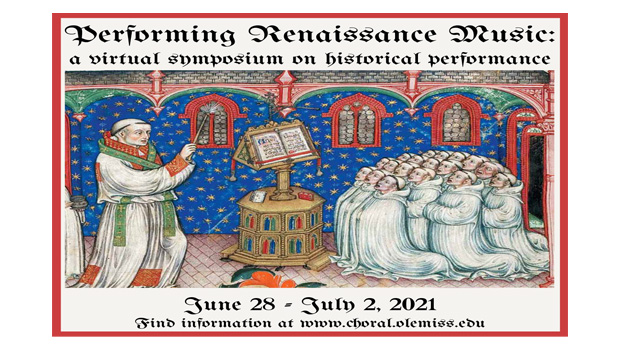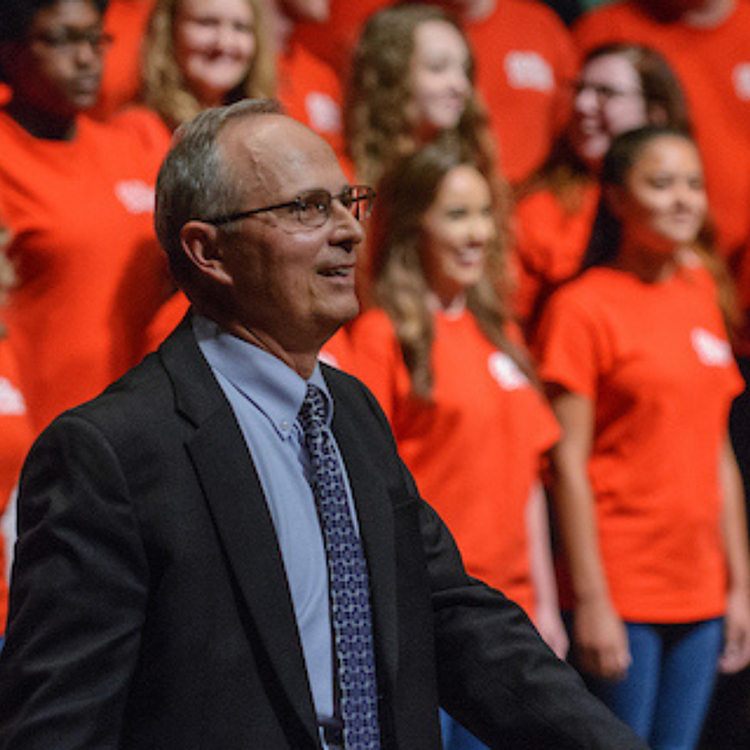
When we consider the visual art of the Renaissance, we think of elevated expression, vibrant color, innovation, and perspective. When we consider the music of the Renaissance, however, it is a very different story, says choral director and scholar Dr. Dennis Shrock.
“The Renaissance music we hear today, composed at the same time as the painting, sculptures, and imagery, is flat, dull, and restrained,” said Shrock. “It is as if the music has been covered up by centuries of dust and grime that conceal its vibrant colors.”
But this is not the way Renaissance composers and their audiences experienced the music, explains Dr. Donald Trott, Director of Choral Activities at the University of Mississippi Department of Music.

“Unlike art and architecture, the music as it was performed at the time no longer exists,” said Trott. “But there are historical resources available from the period that explain exactly how it should be performed.”
An upcoming online symposium presented by the University of Mississippi, Performing Renaissance Music: A Virtual Symposium on Historical Performance, will dive into the practical aspects of performing Renaissance music, taking direction from historical sources from that same period.
“By performing the music in new, historically informed ways, we are able to clean off the dirt and grime of past misunderstandings, and restore the music to its natural beauty,” said Shrock, “and as a result, we can better appreciate the music, and create a desire to perform more of it with greater frequency.”
The Symposium had originally been planned as an on-campus event in the summer of 2020. Deciding to make the proceedings virtual was not just an accommodation to the pandemic, it was also a chance to make the material much more broadly available, said Trott.
“A student or teacher anywhere can access these videos, pause, and rewind to better study the musical samples, and come away with a very strong understanding of how to work with Renaissance music on a practical level,” Trott said. Symposium content will be released as one video per evening the week of June 28th on UM Choir’s YouTube channel and will remain there for anyone to enjoy, free of charge.
Ole Miss Musicologist Dr. Thomas Peattie said there is a robust tradition of performer-driven explorations of early music often conducted in collaboration with musicologists who specialize in the time period. Historically-informed early music performance grew in the second half of the twentieth century and helps both performers and audiences engage with the music on a more substantial level.
Although ongoing efforts by musicologists to investigate musical sources of the Renaissance have identified rich source material, Trott said that many conductors shy away from performing it because they don’t have the specific understanding they need to put it into practice with their choirs.
The Symposium will be an important resource for those choral conductors, and it will be an especially meaningful experience for choral students, many of whom read Shrock’s recent book on the topic for class during the 2020–2021 academic year. The book is also entitled Performing Renaissance Music.
The Symposium is comprised of lectures in which Shrock explores five essential aspects of performing Renaissance music; each lecture will also feature professional singers performing pieces that illustrate and illumine Shrock’s points. “We have the ability to experience the music as we do the paintings of Leonardo da Vinci and the sculptures of Michelangelo, as well as all of the other expressive imagery of the time,” Shrock said. To make our performances “comparable to, and as exciting as, the artworks,” he said, we need to consider five areas of performance: sources and forces, sound and pitch, meter and tempo, phrasing and text underlay, and ornamentation and expression.
The introductory video to the Symposium is already posted on YouTube and is available for anyone to view. In it, Dr. Dennis Shrock gives an overview of his approach to performing Renaissance music and illustrates with beautifully performed musical samples.
A new video, one for each of the five areas of performance, will be posted each evening beginning Monday, June 28, on the UM Choral YouTube channel.
Keep up with the Ole Miss Choral Symposium on Facebook, and fill out this interest form to receive updates and broadcast reminders.



